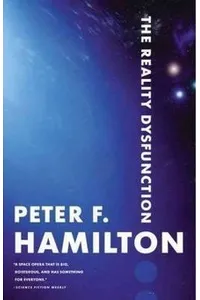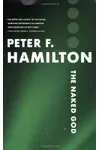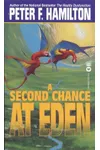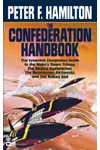Step into the cosmic chaos of the Night’s Dawn trilogy, a sprawling space opera by Peter F. Hamilton that rockets you into a 27th-century universe teeming with adventure, horror, and humanity’s deepest questions. Imagine a galaxy where the dead don’t stay dead, and the living must battle an otherworldly invasion—ready for the ride?
This epic series blends hard science fiction with metaphysical chills, following humanity’s fight against souls returning from a nightmarish 'beyond' to possess the living. With richly crafted worlds, quirky characters, and mind-bending themes, Night’s Dawn is a must-read for fans of grand, galaxy-spanning tales.
How Night’s Dawn Began
British sci-fi maestro Peter F. Hamilton launched the Night’s Dawn trilogy in the mid-1990s, fresh off his Greg Mandel novels. Inspired by his love for expansive world-building and classic space operas, Hamilton envisioned a universe where advanced tech meets existential dread. Published between 1996 and 1999, the trilogy—starting with The Reality Dysfunction—catapulted him to fame, selling over two million copies by 2004 and cementing his status as Britain’s top sci-fi author.
The Heart of Night’s Dawn
The trilogy unfolds across three massive tomes: The Reality Dysfunction (1996), The Neutronium Alchemist (1997), and The Naked God (1999). In The Reality Dysfunction, a renegade’s encounter with an alien entity unleashes the 'possessed,' souls from a hellish dimension wreaking havoc on humanity’s galactic colonies. The Neutronium Alchemist escalates the crisis as the possessed, led by figures like a resurrected Al Capone, spread chaos, while heroes like Joshua Calvert race to stop them. The Naked God wraps up the saga with a cosmic showdown, exploring whether humanity can outwit its own past.
Hamilton’s universe is a vibrant tapestry of Adamists (tech-savvy humans) and Edenists (telepathic bio-engineers), set against bizarre aliens like the centaur-like Tyrathca. Themes of human resilience, the ethics of technology, and the nature of consciousness shine through, blending cyberpunk grit with horror-tinged suspense. The series’ 1.2 million words paint vivid planets and sprawling space battles, though some fans note its dense exposition and a slightly neat ending.
Why Night’s Dawn Resonates
Night’s Dawn redefined space opera with its bold mix of sci-fi and supernatural horror, influencing modern genre-blending authors. Its intricate world-building and philosophical depth have earned a devoted fanbase, with readers on platforms like Goodreads praising its 'breathtaking adventures' despite occasional critiques of its length. Decades later, the trilogy remains a benchmark for epic storytelling, inviting new readers to explore its cosmic mysteries.
- Publication Years: 1996–1999
- Books: 3 (The Reality Dysfunction, The Neutronium Alchemist, The Naked God)
- Word Count: ~1.2 million
- Companion: A Second Chance at Eden (short stories), The Confederation Handbook
Grab The Reality Dysfunction and blast off into Night’s Dawn’s thrilling universe—where space opera meets the supernatural!




